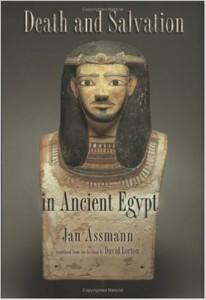The demise of my father was a very difficult experience for me. For the first time in my life I had a direct and tangible encounter with death. It was years ago, but I still remember clearly the acute feeling of void; something very valuable had been forcefully torn away, leaving a painful sense of a cleft. In fact, it almost felt like an abyss – one careless moment of neglecting rational considerations and I would slip into pure agony.
Of course I couldn’t say what death was. Like most people, I could say what it was not: my father wasn’t sitting in his armchair, he wasn’t reading, we didn’t have our usual conversations – and his poor health was no longer a subject of constant concern.
After the first phase of shock and confusion, I realized I needed to think of him in a somewhat concrete manner. Most people, either having a vague feeling that the deceased still exists or fully believing in the immortality of the soul, can’t avoid the most simple, basic question: where is the dead person now? Many feel he or she is ‘in the sky’. Our fundamental mental structure contains visual images of a person, even after his or her death.
I admit I find it hard to connect with the vision of heaven and hell, I am not quite sure why. Maybe it is its underlying premise that people are either good or bad; perhaps it is the very images of heaven, which seem to me inactive, almost idle. The most I could imagine was my father existing somewhere in space.
By chance, at that time I came across a book discussing the perception of death in ancient Egypt. Jan Assmann’s Death and Salvation in Ancient Egypt contains a profound and detailed analysis of perceptions of death in various cultures, ancient Egypt in particular. He examines this fascinating topic from an anthropological perspective: what can we learn about societies by their attitude towards death? Is death taken simply as a termination of life, or as a new beginning? Is it a negation of life, or its sequel? Is it more important than life, or not as significant?
Assmann’s point of departure is that death is the main generator of cultures. Man has always seen death as a central part of his life, and therefore it shaped his world. Yet modern culture is an exception: it excludes death, rejects it. “Few cultures in this world exclude death and the dead from their reality as we do. Living with the dead and with death is one of the most normal manifestation of human cultures, and it presumably lies at the heart of of the stuff of human existence.”
In Christianity, argues Assmann, the afterlife is more important than life; it is there that true reward and punishment are exercised. In Judaism, the striving for immortality is materialized in children and grandchildren. In ancient Egyptian religion, death was often seen as transition, a passage, a long journey to the throne of Osiris.
This image of the traveling dead was completely new to me. In my mind death was stationary, unchanging; something that, once it has happened, is static. But this ancient Egyptian image of afterlife was so dynamic and vital. In fact it was not death, but rather a departure of this world while alive: “The deceased has departed, and the continuation of his journey to the afterlife thus entails, first and foremost, a distancing from death.” He had to cross ‘a great lake’, a huge body of water, bewaring of frightful creatures, careful not to be left on its banks, where the dead are really dead. This journey, fascinating yet perilous, was an official one, so to speak. The dead were protected, and needed not worry about ill-will being spoken of them in this world. Defaming the deceased would have been severely punished by the gods.
This perception of death that I was encountering for the first time brought me true comfort. Of course the pain was there, but this fresh visual idea of my father’s afterlife was so consoling. I could easily imagine him on a very long journey, his curious nature gratified by the changing scenery and the strange creatures on the way. Also this travel would have fitted his active nature, whereas imagining him in heaven seems almost unnatural.
No one knows what death truly looks like; but sometimes adopting a certain image of the deceased may change our experience of loss and mourning.
Jan Assmann, Death and Salvation in Ancient Egypt. Ithaca N.Y., Cornell University Press. 2005.

Fascinating! Thanks for adding this new perspective.
According to Hindu Philosophy as enumerated in the sacred book ‘Srimad Bhagavad Gita ( Chapter 2), Lord Krishna explained to Arjuna explained beautifully that physical body will perish as a natural law but the soul in it will remain forever. Although by reflection it can be clearly understood that the soul is indestructible and not to be lamented for; yet and still the physical body is destructible. With the termination in battle of the physical body of a very dear one such as preceptor, protector or loved ones the separation from whom will undoubtedly cause deep lamentation. To categorically clarify this misusage Lord Krishna explains that just as there is no grief when one discards old worn out garments and there is joy at accepting new garments in the same way the embodied soul discarding old worn out bodies joyfully accepts new ones. .
Thanks. I will look into this book.
You might enjoy reading Jewish Views of the Afterlife by Simcha Paull Raphael https://rowman.com/ISBN/9780742562219/Jewish-Views-of-the-Afterlife-Second-Edition